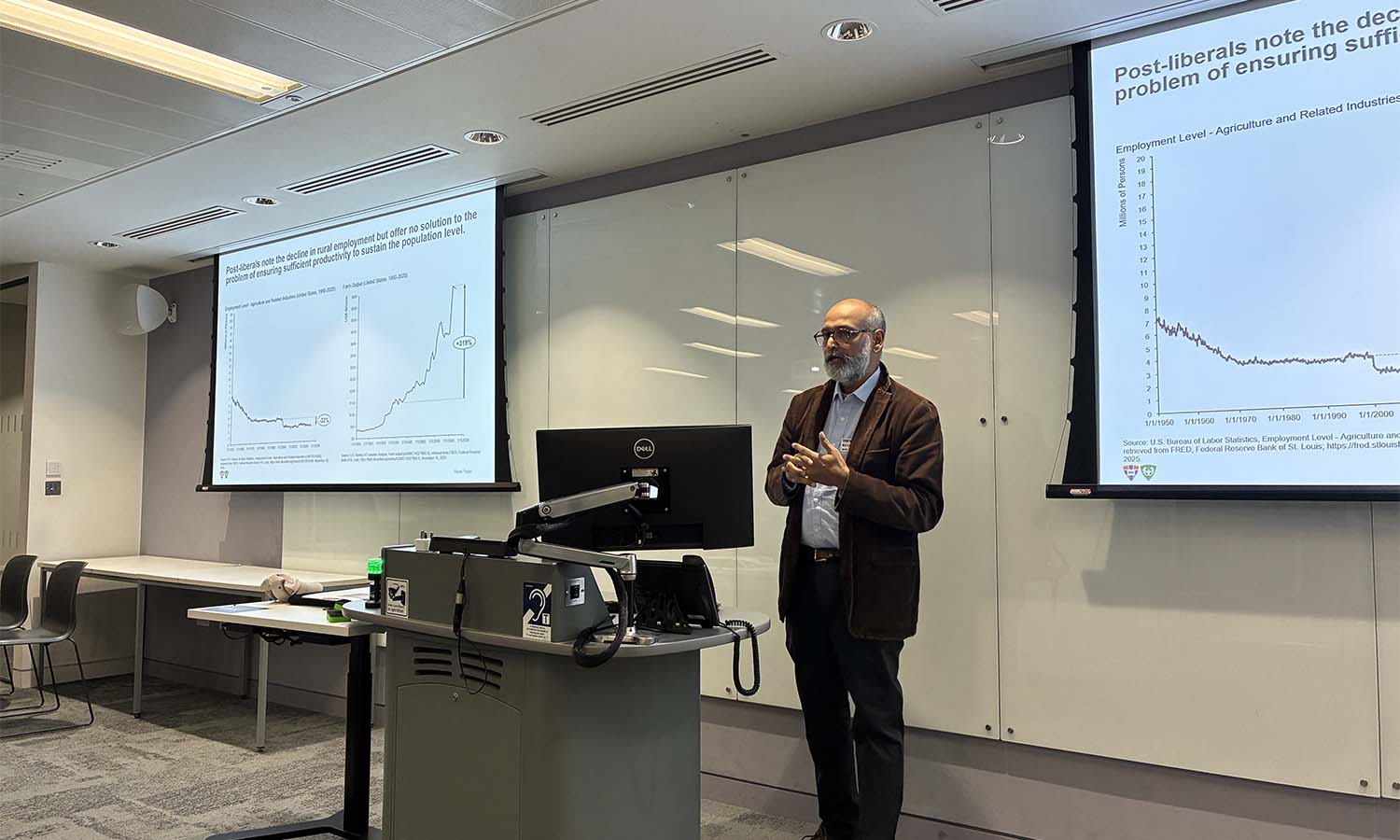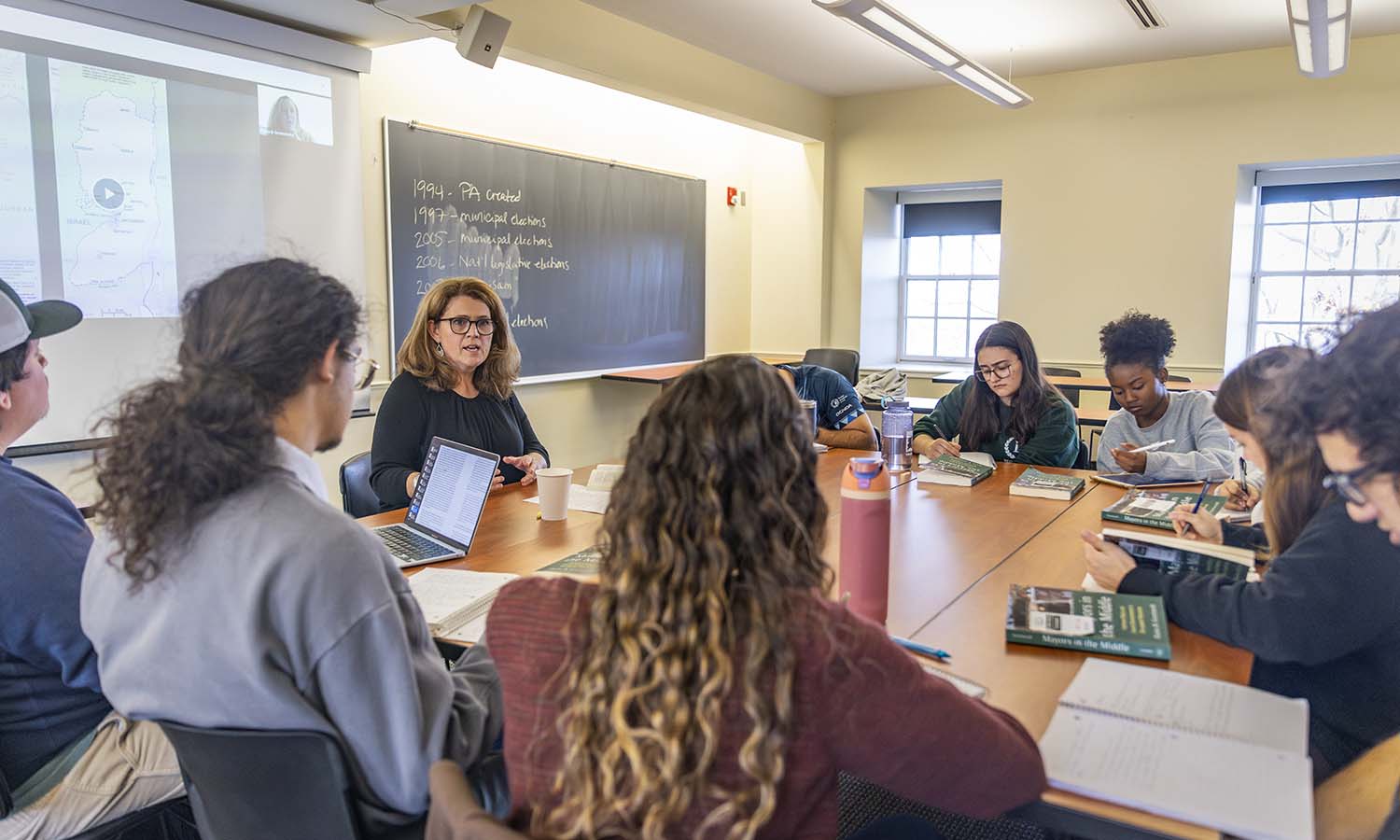
HWS News
17 April 2017 • Faculty • Research • STEM HWS Presents at National Physics Conference
Bringing the Finger Lakes to Atlanta, Assistant Professor of Physics Ileana Dumitriu, physics lab technician Peter Spacher Ph.D. and Christopher Demas ’17 recently presented their respective research at the winter conference for the American Association of Physics Teachers (AAPT), the largest conference for physics teachers across the globe.
“Being part of the AAPT meeting will rank among one of the most influential experiences during my college career,” says Demas, who was one of the few undergraduate students to conduct an oral presentation at the conference. “Through my many conference experiences at HWS, I felt very prepared for the national meeting and having the opportunity to present my Honors research.”
Demas, who presented his research on algae blooms in the Finger Lakes, says he discovered his passion for physics in Dumitriu’s first-year seminar on the physics of human body motion. He then led Dumitriu’s Spectroscopy Project and became a leader on the HWS Aerospace Research Team, funded through the Colorado Space Grant Consortium. The student team, led by Demas, Dumitriu and Spacher, won first-prize for their project at the National Student Solar Spectroscopy Competition, with Hobart and William Smith being the only liberal arts school to participate.
“Everybody (students, faculty and HWS) wins by attending a national conference. The students gain a wider view and understanding of science and research, and they have an opportunity to meet other scientists and employers,” says Spacher, who presented on the Colleges’ RockSat-C chapter, a national program for students to design and build a sounding rocket payload to have launched in a rocket from the Wallops Flight Facility.
The RockSat-C program, funded at HWS through the Colorado Space Grant Consortium, came to the Colleges after Dumitriu and her students like Demas made a name for themselves on the national research stage with their award-winning Spectroscopy Project. “Chris has an ability to dive into difficult problems, finding ingenious solutions. I am impressed with his ability to interpret the results of his research in light of current literature, design follow-up experiments and organize and manage a research team,” says Dumitriu, who presented “Quantification of Harmful Algae Blooms Using UAS Imagery.”
Following graduation, Demas intends to attend medical school and become a physician. “Being able to think critically through rigorous problem solving as a researcher and a physics and biochemistry double major has given me a great deal of self-efficacy,” explains Demas. “I have no doubt that my academics and research experience at HWS has prepared for the rigorous process of becoming a physician.”
The following oral presentations were included at the AAPT :
- “Remote Sensing of Harmful Algal Blooms via Drone Spectral Imaging” by Demas —
“This research uses drone-collected reflectance spectroscopy images to remotely measure algae concentration,” says Demas. “This inexpensive technique coupled with routine monitoring improves upon current in situ colorimetric methods of measuring algae concentration. Initial results show the viability of using drones to measure algae concentration through collecting of spectra of water samples around the visible blue/green wavelength range.” - “STEM Incorporated into a NASA Payload” by Spacher and Dumitriu – The presentation highlighted how multiple NASA competitions and successes on the national stage tripled the number of physics majors at HWS.
- “Quantification of Harmful Algal Blooms using UAS Imagery” by Dumitriu, Spacher and Professor of Geoscience John Halfman – This research used drone technology to obtain aerial photographs of the Finger Lakes and then compared green/blue coloring ratio to chlorophyll-a abundance in water samples. “Harmful Algal Blooms (HABs) have become a growing concern both locally in the Finger Lakes Region and globally,” says Dumitriu. “Extensive monitoring of HABs will be key to understanding the root cause for such blooms.”



